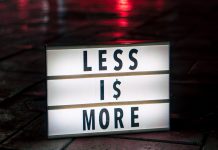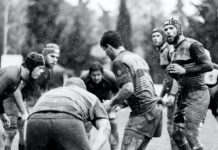Some of you might be familiar with one of my favourite sayings which is “No matter how much training you give to a donkey… it’ll never win the Melbourne Cup.” Do you know why?
Because it’s a donkey.
Sure, it kinda looks like a race horse. It eats what race horses eat. It dumps like a race horse dumps. And it may even be truly committed to being the best race horse it can possibly be. “No, honestly! Just give me a chance to show you what I’m capable of!” But it’s not going to happen. Because to do so will require it to behave in a manner which is at odds with who and what it really, naturally, is.
And in so many cases I have seen way too many businesses hire what they have convinced themselves is a race horse… only to find months later they hired a donkey.
Let’s take a look at sales managers…
In my Sales Managers Australia business we help mid-size, privately-owned businesses to recruit their first sales managers. And as with each of my recruitment brands we utilise a number of highly effective assessments to discern whether the people who apply for the role are made of ‘the right stuff’. We do that using behavioural science. And here’s what we’ve learned about those folks who have been seen, and go on to be seen, as highly effective sales leaders.
We use the Profiles Sales Assessment™ from Wiley, which measures the combination of a person’s cognitive ability, behavioural attributes and occupational interests. The tool enjoys one of the highest predictive reliability ratings in the world. The system takes the data from the assessments of these high-performers and identifies the common traits which are contributing to their success. It creates a benchmark to compare against.
Over the last 15 years I have assessed thousands of people in various ‘head of sales’ roles (defined in this instance as: any person with responsibility for delivering sales results through and with others). More recently we approached a good number of our mid-tier clients and, providing them with some definitions, asked them to indicate whether they felt their ‘head of sales’ was an effective sales leader. For those who were, we then invited that sales leader to sit the assessment again to verify the benchmark.
The results are interesting to contemplate.
And suggest ways for you to discern the race horse from the donkey…
As far as cognitive ability is concerned what we saw in the high-performers was a very high capacity for taking in, analysing, interpreting and correlating information and learning new things. Their ‘Learning Index’ is at a level only found in 5% – 40% of the population (so, the right hand side of the bell-curve).
In Behavioural Traits:
- Quite surprisingly at first consideration, the most effective sales leaders are less ‘driven’ than their mid-performing peers. Up to 30% less psychological energy is placed in the pursuit of goals/outcomes. Their energy is more moderated, with a focus on process rather than inspiration or motivation. They are motivated but this is NOT the prime hardwired behaviour that leads to their success.
- High performing sales leaders are naturally comfortable asserting themselves. With levels of assertiveness found in the top 10-40 percentile band. Only 5%-10% of the population are more naturally assertive. This was not the case with mid-performing managers whose natural Assertiveness scored in the middle of the bell-curve;
- The exemplars have less need to socialise. They can and will, as required but they do not need to do so. Mid-level performers display a higher level of Sociability (pushing well into the top quartile of the population) and a need to be part of a social cohesion. The exemplars are not the charismatic style of leader. The exemplars are, comparatively, somewhat more considered – erring more towards being naturally ‘ambiverted’. They socialise as needed, returning to the task at hand quite readily;
- The leader group present as rule-breakers (5-10% band) or rule-benders (20-40% band) (so definitely on the left side of the bell-curve) in the Manageability scale. They are more inclined to depart from ‘standard operating procedure’ than mid-performers who show a preference to be adherents. They are natural risk-takers. The mid-performers do desire some level of autonomy but they from 40% to 80% more risk averse than their high-performing contemporaries. This seems to be viewed by direct-reports as ‘career protection’ on behalf of the middle performing group;
- On the ‘Attitude’ scale which measures optimism and pessimism, whilst neither group is at the extreme, mid-performers do demonstrate a greater degree of cynicism and fault-finding than the leader group. The leaders evidence somewhat more resilience and a healthy (so, not ‘blind’) optimism and are more inclined to be opportunistic. They are 30-40% more naturally optimistic and self-confident than the middle-performers;
- The leaders are significantly more naturally decisive – almost 50% more so. Mid-performing sales managers are not ‘paralysed’ but they are notably less inclined to make decisions or take action. Again there is a correlation here to risk-aversion. This is a significant area for concern in our opinion as the need to act, once appropriate due diligence has been performed, seems to be imperative today;
- The high-performing sales leaders rate slightly lower on the ‘Accommodating’ scale, with a stronger natural inclination toward standing firm, holding people accountable and not tolerating excuses. They are 10-30% less willing to flex from their agenda or expectations than the general population. Mid-performers were more naturally tolerant and inclined to give people ‘one more chance’;
- High performing sales leaders are naturally Independent. Their scores place them in the 40%-5% band (right side of the bell curve). Taking the lead comes naturally to them;
- Of particular surprise was the degree of polarity when it comes to Objective Judgement. The middle-performing group has a greater inclination (and preference) for subjective decision-making, with greater reliance on gut feel. The leader group is quite clearly more inclined towards data-driven and objective decision-making.

We didn’t expect there to be any particular common differences as far as Occupational Interests was concerned, as this area is often affected by the nature of the industry the individual is working in – which for most people is aligned with what they enjoy doing or being associated with. However, there was one discernible difference – the leader group tended to have People Service as their first or second preference. Leaders like people. Even in mechanical or technical type organisations. The middle-performing sales managers tended to place People Service third or lower, in level of interest.
“Leaders like people.”
So, how should your next sales leader be naturally hardwired in order to improve the odds of them being the ‘race horse’ you want and need?
- Above average intellect
- Motivated but not so focused on the goal they can’t see anything else
- Assertive but not dominant. Iron fist, velvet glove
- Ambiverted. Happy to socialise but not in need of doing so
- Risk-tolerant, questioners of the status-quo, creative ‘on their feet’
- Healthily optimistic and naturally resilient
- Decisive once they have sufficient facts. Action-oriented
- Firm but fair. Open to input but will not need consensus. Equally comfortable holding people accountable
- A natural leader. Someone who takes the initiative and gives energy to action
- View the world primarily through facts, evidence and data
- They love being in the sales environment
- They truly love building capability in others
I hope you’ve found this interesting. If anybody has any questions I’d be delighted… and of course if you’re interested in having an ‘inventory’ done on your sales management folks please connect with me via LinkedIn. (PS. If you’re not in sales but what you’ve read resonates, please consider sharing this article with your organisation’s Sales Director.)




























